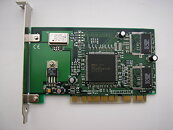TheLostSwede
News Editor
- Joined
- Nov 11, 2004
- Messages
- 17,583 (2.40/day)
- Location
- Sweden
| System Name | Overlord Mk MLI |
|---|---|
| Processor | AMD Ryzen 7 7800X3D |
| Motherboard | Gigabyte X670E Aorus Master |
| Cooling | Noctua NH-D15 SE with offsets |
| Memory | 32GB Team T-Create Expert DDR5 6000 MHz @ CL30-34-34-68 |
| Video Card(s) | Gainward GeForce RTX 4080 Phantom GS |
| Storage | 1TB Solidigm P44 Pro, 2 TB Corsair MP600 Pro, 2TB Kingston KC3000 |
| Display(s) | Acer XV272K LVbmiipruzx 4K@160Hz |
| Case | Fractal Design Torrent Compact |
| Audio Device(s) | Corsair Virtuoso SE |
| Power Supply | be quiet! Pure Power 12 M 850 W |
| Mouse | Logitech G502 Lightspeed |
| Keyboard | Corsair K70 Max |
| Software | Windows 10 Pro |
| Benchmark Scores | https://valid.x86.fr/yfsd9w |
If you owned an Apocalypse 3d/3dx or Matrox m3D, you would've been one of many gamers that had bought a PowerVR Series 1 based 3D graphics accelerator and was both excited and underwhelmed at the same time. Released originally in 1996 and the PCX1 manufactured a 500 nm and a core clock speed of whopping 60 MHz, it was the only direct competitor of 3dfx's original Voodoo graphics card, which was technically slower at 50 MHz, but delivered a lot better in terms of 3D quality. Here we are in 2022 and Imagination Technologies, the company behind the PCX1 and the die shrunk PCX2 that was launched a year later, is releasing the drivers for both 3D accelerators as open source. Outside of a big nostalgia trip for those that might still have their card knocking around, there's questionable value in these drivers.
The second generation of PowerVR GPU's ended up powering the Sega Dreamcast with the third generation ending up in PC GPUs that were competitive with the NVIDIA GeForce 256, at least until NVIDIA changed from SDR to DDR memory. The most unique part of the PowerVR Series 1 was that the 3D accelerator could use the main 2D display cards memory as a framebuffer over the PCI bus. Sadly most games didn't support the PowerSGL API at the time and weren't able to take full advantage of the hardware when DirectX 3.0 was used. The open source drivers are provided as is and it seems like some libraries are missing for the Tomb Raider port for the PoverVR Series 1 3D accelerators, but beyond that, there should be no limitations.

View at TechPowerUp Main Site | Source
The second generation of PowerVR GPU's ended up powering the Sega Dreamcast with the third generation ending up in PC GPUs that were competitive with the NVIDIA GeForce 256, at least until NVIDIA changed from SDR to DDR memory. The most unique part of the PowerVR Series 1 was that the 3D accelerator could use the main 2D display cards memory as a framebuffer over the PCI bus. Sadly most games didn't support the PowerSGL API at the time and weren't able to take full advantage of the hardware when DirectX 3.0 was used. The open source drivers are provided as is and it seems like some libraries are missing for the Tomb Raider port for the PoverVR Series 1 3D accelerators, but beyond that, there should be no limitations.

View at TechPowerUp Main Site | Source







